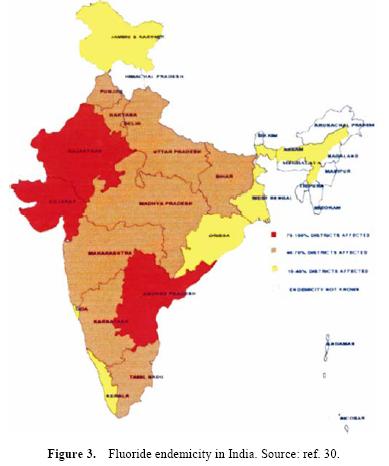/topics/wells-and-step-wells
Wells and Step-wells
Dynamic groundwater resources of Karnataka (2009)
Posted on 16 Jan, 2012 11:05 PMIt also presents the status of utilisation of groundwater in Karnataka as on March 2009, both on watershed (sub catchment) and taluk wise areas having 2008-2009 as the base year. The methodology is improved as the estimations are carried out on watershed basis for both command and non command separately than apportioned to taluks.
Sustainable groundwater management – Report of the Working Group of the Planning Commission for the 12th Five Year Plan
Posted on 06 Jan, 2012 04:27 PMThe existing methodology of groundwater resources assessment is appropriate and suitable for country-wide groundwater resources estimation, considering the present status of database available with the Central and State agencies.
Status of groundwater quality in India - Report of the survey conducted in metropolitan areas by the CPCB
Posted on 24 Nov, 2011 05:36 PMThe report recognises that most groundwater quality problems are anthropogenic in origin, caused by a combination of over-exploitation and infiltration of wastes. Inadequate infrastructure and resources mean that waste generated by cities and industrial areas is not properly collected, treated and disposed, thus leading to grondwater contamination.
Creation of a village spring atlas for the conservation of Himalayan springs and adapting to climate change
Posted on 18 Nov, 2011 11:52 AMImage courtesy: http://sikkimsprings.org/
Polluted river stretches in India: Criteria and status - A report by Central Pollution Control Board
Posted on 04 Oct, 2011 10:53 PMThis brief report by the Central Pollution Control Board (CPCB) presents an analysis of the monitoring of the water quality in India under the National Water Quality Monitoring Programme. The water quality data for the years 2002-2008 has been analysed and monitoring locations exceeding the water quality criteria have been identified as polluted locations with respect to risk.
Institutionalization of users' level - Water quality monitoring and surveillance in Gujarat - A report by WASMO
Posted on 26 Sep, 2011 11:39 AMThe programme focused on community involvement in assessing and evaluating water quality.
Odisha Groundwater (Regulation, development and management) Bill, 2011
Posted on 09 Sep, 2011 06:44 PMContent courtesy: Odisha Water Forum
The Odisha Groundwater (Regulation, Development and Management) Bill, 2011 has been placed before the Odisha Legislative Assembly in this session. Odisha Water Forum has gone through the contents of this bill. While Odisha Water Forum appreciates the initiative of the Government of Odisha to regulate development and management of groundwater, it is concerned about the fact that this bill does not address the fundamental concerns regarding groundwater management.
Frequently asked questions (FAQ) on Groundwater - Understanding the basics
Posted on 08 Sep, 2011 04:56 PMA comprehensive FAQ Manual on Groundwater authored by Dr Mihir Kumar Maitra narrows down the existing knowledge gaps amongst the common groundwater users.
The most popular FAQs are listed below. Please click on a topic to view more detailed information:
Basic information on groundwater

Groundwater, self-supply and poor urban dwellers - A review with case studies of Bangalore and Lusaka by IIED
Posted on 24 Aug, 2011 08:32 PMIt investigates the difficulties they face and emphasizes the need for better integration of groundwater in the planning and management of urban water resources.
Challenges of sustainable water quality management in rural India - Current Science
Posted on 23 Aug, 2011 04:51 PM The article informs that access to safe drinking water remains an urgent necessity, as 30% of urban and 90% of rural households still depend completely on untreated surface or groundwater.
The article informs that access to safe drinking water remains an urgent necessity, as 30% of urban and 90% of rural households still depend completely on untreated surface or groundwater.
While access to drinking water in India has increased over the past decade, the tremendous adverse impact of unsafe water on health continues. It is estimated that about 21% of communicable diseases in India are water related.
Although some degree of intervention in terms of chlorination and monitoring of water quality exists in major cities and towns, rural India, which constitutes the bulk (70%) of the population, is usually deprived of such interventions. The population in rural India is mainly dependent on the groundwater as a source of drinking water. As a quality concern the groundwater is often found to be contaminated with fluoride, arsenic, iron and salts. In recent years, fluorosis has emerged as major public health issue in rural India.




